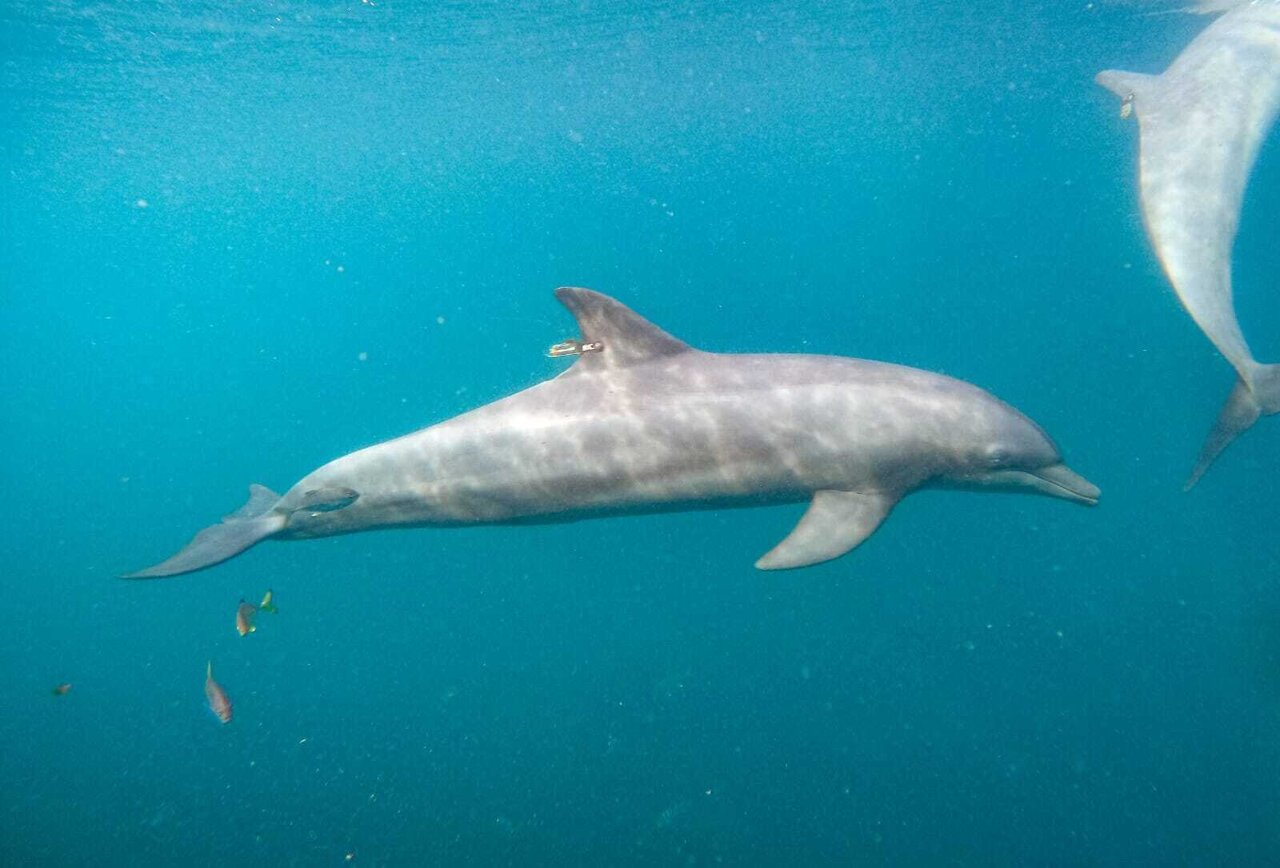
Three bottlenose dolphins that had been rescued were released into the open sea from an Indonesian sanctuary. Read to know more.
After years of confinement for the enjoyment of visitors who would touch and swim with them, three bottlenose dolphins were released into the open sea in Indonesia on Saturday.
Underwater gates opened off the island of Bali, allowing Johnny, Rocky, and Rambo to swim freely as red and white Indonesian flags flew in the background. After years of performing in a traveling circus, the trio was sold and rescued three years ago from their cramped pool in a resort hotel.
At the Bali sanctuary, a floating pen in a bay that offered a kinder, more natural environment, they restored their health and vitality.
“It was an emotional experience to see them go.”: Lincoln O’Barry on the release of the dolphins

According to Lincoln O’Barry, who collaborated with the Indonesian government to establish the Umah Lumba Rehabilitation, Release, and Retirement Center, dolphins are wild animals that should be allowed to remain in the wild. “It was an incredibly emotional experience to see them go,” he said.
The Bali Forestry Department and the Indonesian Ministry of Forestry launched the center in 2019. In Indonesian, “Umah lumba” is the word for dolphin. The dolphins stared at the opening once the gates opened for a while, unsure of what to do. But after almost an hour, they started moving, occasionally jumping across rough seas.
The Associate Press observed their release via an online livestream. O’Barry happens to be documenting their release with drones and underwater footage for a film.
Their rescue was supported by the Indonesian government, working with Dolphin Project. This was founded by Lincoln’s father, Ric O’Barry, who was also present at the time of the release.
Ric O’Barry worked as the dolphin trainer for the 1960s television program “Flipper,” but he eventually saw how much of a burden it was to the animals. Since then, he has committed his life to help dolphins go back into the wild.
The facility was sad to see them go
The facility’s rehabilitation coordinator, Wahyu Lestari, said she was sad to see them go. She said, “I’m happy they are free, and they are going back to their family. They should be in the wild because they are born in the wild.”
For a year, GPS tracking will be used to monitor the released dolphins at sea. They are welcome to visit the sanctuary again, but it’s not clear what they will do there. They might stay together, move on to another pod, or go their separate ways.
When Johnny, the eldest dolphin, was saved in 2019, his teeth were worn all the way down to the gum line. He received dental crowns resembling dolphins earlier this year, allowing him to now clamp down on fish. Of the three dolphins, Johnny was the first to swim out to sea.
Following a ten-year public education effort that included billboards, artwork, school programs, and a push to discourage people from purchasing tickets to dolphin exhibitions, the Indonesian government decided to safeguard the dolphins.
On Saturday, a government minister was on hand to unlock the sanctuary’s gate.
The sanctuary in Indonesia will still be used to house additional captive dolphins, according to Lincoln O’Barry. As more dolphin shows close, similar sanctuaries are being planned in North America and Europe. He claimed that thanks to technology like virtual reality, visiting a zoo or a dolphin show is no longer necessary to appreciate nature.
Within a few miles (kilometers) of Indonesia, the three dolphins had been released. They encircled the sanctuary though before they departed.
Lincoln O’Barry said, “They turned back around and came back to us one more time, almost to say thank you and good-bye. And then they headed straight out to the open ocean and disappeared. Where they head next, we don’t know. But we wish them a good life.”
